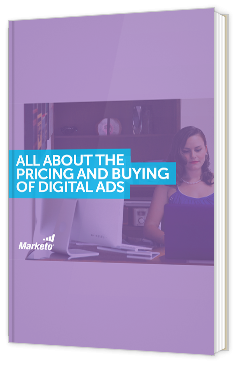

Download this ebook to learn about the different types of pricing structures, and the advantages and disadvantages of buying them manually or programmatically

"Bidding
Many ad units are sold in an auction, which to most people brings up the image of a high-stakes bidding war with a fast-talking auctioneer or the feeling you get when you win a brand new Apple Watch from eBay.
Most digital advertising ad auctions don’t operate this way. They use a unique formula to determine your ad’s position—where your ad places on the page.
According to Google, its ad auction “uses both quality and bid to determine an ad’s position”. Bidding models, like Google’s, allow you to have a competitive bid, even if you offer a lower bid amount, because part of its formula is based on content–relevant keywords and quality images.
In an auction environment, you can pay less than your maximum bid because you only pay what is minimally required to hold your ad position and ad format. The price you pay will increase up to your maximum bid in order to hold your position and format. Because of this structure, you can sometimes come in under budget. When this happens, what you pay is called your actual cost-per-X—where ‘X’ could be actual cost-per-lead or actual cost-per-click, etc. based on your pricing model."